6 Must Visit Temples if You are Trying to Conceive:
In India, there is god for every wish, every cult. When everything else fails we rely on the power of prayer. Fertility is no different. There are gods and temples solely dedicated to the fulfilment of the desire of having a child.
One of the foremost temples in India is the Garbarakshambigai Temple. This website is dedicated to Garbarakshambigai Amman. However, there are some other temples in India known for their powers to bless infertile couples with children and also bless pregnant women with a safe pregnancy and easy delivery.
Listed below are a few temples spread all across the country that is famous among devotees and known to bless the worshiper with the boon of a child.
1. Sri Santhana Venugopala Swamy Temple
Introduction:
Situated in the village Hemmaragala, Nanjanagudu, Mysore, this 1800 year old temple is also known as ‘Dakshina Govardhana Kshetra’ and became famous after Shri Koundaniya Maharishi, a pre-Buddhist era saint, worshipped and offered penance in this temple.
It is believed that offering prayers in the temple will free devotees of all their health and monetary problems. Thousands of devotes especially childless couples throng this temple every year with the hope of getting their wishes fulfilled.
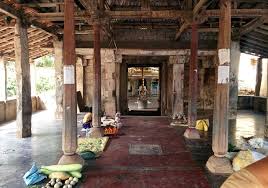
Significance:
Influences of Hoysala, Udbhava and Vijaynagara times can be seen in temple’s architecture. A beautiful idol of Lord Shri Krishna in ‘tribhangi avatara’ is kept in the temple and mesmerizes the devotees.
Another attraction for devotees is ‘danda’, a stick supposedly belonging to maharishi. It is believed maharishi transferred his powers into the stick before leaving his body, his way of helping people in need from beyond.
There are many legends and stories associated with the temple that make it extremely popular among couples seeking a child.
2. Hucchu Gopala Temple
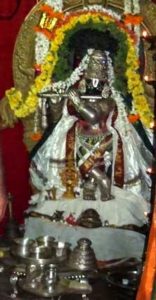 One of the Chola kings after having 11 girl child prayed to the god for a male child. When his 12th child also turned out to be a girl, the king in anger left the child in the temple. The next day, miraculously, there was a baby boy in the temple.
One of the Chola kings after having 11 girl child prayed to the god for a male child. When his 12th child also turned out to be a girl, the king in anger left the child in the temple. The next day, miraculously, there was a baby boy in the temple.
Dead came alive – it is believed that when a 6 yr old child collapsed dead suddenly, his shocked parents cried in front of the deity of the temple, praying for the child’s life and then what happened still amazes devotees. The child stood back to life, happy and smiling as if he was just playing along.
Puja Ritual:
Faith holders visit the temple from all over the country. Some couples even offer a small silver cradle with baby form of Krishna. After being offered to the deity they are hanged to the roof.
The prasadam usually consists of kumkum and a pouch of beaten rice that only the couple is supposed to have. Saturday and Sundays hold special significance for children seeking devotees.
Who Should Offer Prayers?
Anyone and everyone who is looking for cure from diseases, a child, wealth, health, salvation.
Presiding Deities:
Lord Krishna also known as Huccha Gopala, Bala Gopala, Venu Gopala, Shri Santana Venugopala.
Location:
- The nearest airport – Mysore airport (30 kms)
- The nearest railway station – Badanavalu (4 kms)
- The nearest cities – Bangalore (180kms) and Mysore (35kms)
3. Shri Satyagiriswarar Temple
Introduction
This 1300 year old temple built by Mahendra Pallavan is situated in Thirumayam, 21 kms away from Pudukottai, Tamil Nadu. The temple is one of the major tourist attractions of the state and is dedicated to God Siva and his wife Goddess Parvati. It is believed Sathya Maharishi performed his penance here.
The temple is built adjacent to Lord Vishnu temple which is more than 1000 years old. It is believed that they were constructed from the same rock and the idea was to maintain friendly relations between devotees of Lord Shiva and Lord Vishnu. Girvalam (the act of going around the hill) cannot be completed without covering both the temples.
Significance
The temple is beautiful and has many striking stone sculptures. A huge Raja Gopuram is at the entrance of the temple and after crossing it there is a big mandapam known as ‘Maha Mandapam’ which is adorned by sculptures and paintings. The temple is surrounded by hills, the most beautiful one of them being called ‘Vaishnavi Durga’.
Some of the legends associated with the temple that makes it extremely popular among devotees are –
Sathya Meva Jayathey – it is believed that when the evil started dominating the world, Dharma Devatha took the form of deer and came to seek hiding in bamboo forests in this region.
The lord Sathyagiri Nathan is found here in the form of linga, a testament to that truth which has no beginning or end. He overlooks everyone’s destiny calculating their good and bad and hence also known as Sathya Moorthy.
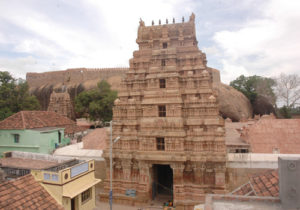
Athiri Muni:
It is believed that Athiri muni and his wife, who were strong believers in the Lord, started praying to the three main gods – Brahma, Vishnu and Shiva, hoping that one of them will take the form of a child and choose them as parents.
The gods were so impressed with their devotion that all three agreed and the couple was blessed with 3 children. The Hamsam of Lord Shiva, the Moon God, chose Sathya Giri Kshetram to do his tapas.
Puja Ritual:
Pujas are conducted all throughout the day in the temple and the temple is open to devotees from 7 am to 8 pm.
Festivals such as Chithrai (April-may), Adipuram (July-august) and Thaipoosam are some of the main festivals celebrated with huge pomp and shows. Also Deepavali, Pongal and Poornima days are of special significance for Girivalam among faith holders.
Who Should Offer Prayers?
It is believed that anyone praying in this temple with utmost devotion and faith will get all their wishes fulfilled especially if it’s related to marriage alliances and children.
Presiding Deities:
Although the temple is dedicated to Lord Siva and his wife, the presiding deity is known as Sathyagiriswarar.
Location:
- The nearest airport -Trichy (64kms)
- The nearest railway station – Thirumayam (Trichy-Rameshwaram rail route)
- The nearest cities – Trichy (64kms) and Madurai (85kms)
4. Sri Andal Temple
Introduction:
This 8th-century temple is situated in Virudhunagar, 80kms from Madurai, Tamilnadu and is dedicated to God Vishnu and his consort Goddess Laxmi. It is one of the 108 Divyadesam and is of extreme significance to faith holders. It is also famous for being the birthplace of 2 important Vaishnavaite saints – Periyazhvar and his foster daughter Andal.
It is believed that offering prayers in this temple will help the devotees with all their problems especially those concerning children, marriage, farming and education.
Significance:
The beautifully designed dravadian style temple is a treat to the eyes. It’s divided into two, the south-west belonging to Andal and the other half to Vadapathrasayi (Vishnu).
The Andal part of the temple is adorned with paintings of the cosmic couple Andal and Rangamannar. Sculptures of various other deities like Mohini, Rati & Kamadeva can also be found in this part of the temple.
The other part of the temple has an image of Lord Vishnu in a reclining posture and surrounded by various other god and goddesses such as Lakshmi & Bhudevi and carvings highlighting the ceiling.
The legend goes that Periazhwar who was a devoted follower of Lord Vishnu was childless and used to offer his prayers and a garland to the lord every day. One day he found a girl near a Tulsi plant in the temple and took him home. The girl also grew up to be a devotee of Krishna (an avatar of Vishnu) and everyday used to secretly wear the garland before his father could offer it to the Lord.
One day his father found a hair in the garden and reprimanded Andala for her mischief. The same night Lord appeared in his dreams telling him that he will only accept the garland if Andala wears them before. The practice continues till date and thus Andala is also called as Chudikodutha Sudrakodi (the one who gave her garland to Vishnu).
Puja Ritual:
Prayer rituals are conducted 6 times in a day at 7am, 8 am, 12 pm, 6 pm, 7 pm and 10 pm. Every ritual conducted for Andala and Vadapathrasayi consists of 3 steps – Decoration, Food offering and Waving of lamps.
The prayers are completed with musical instruments being played and Vedas being recited in front of the deities.
Every year on the 8th day of the month of Tamil month Adi, “Aadi Pooram” festival is celebrated. It is done to mark the day when Andala was adopted by Periazhwar.
The festival is attended by thousands of devotees from all across the country. After the early morning festivities, the deities are taken to the temple car in decorated palanquins with huge pomp and show.
Who Should Offer Prayers?
Anyone who is looking for peace of mind, solving children, education and business related problems can offer prayer in the temple.
Fridays and Saturdays are considered auspicious days to offer prayers.
The temple is open from 7 am to 1 pm and then 4-7 pm.
Presiding Deities:
The main deity is Ranganatha and is also known as Rangamannar
Location:
- The nearest airport – Madurai (70kms)
- The nearest railway station – Sivakasi (10kms)
- The nearest cities – Madurai, Chennai and Coimbatore
5. Mannarasala Nagaraja Temple
Introduction:
One of the most ancient and largest temples dedicated to the serpant god Nagaraja, the Mannarasala Nagaraja temple in Haripad, Kerala is one of a kind. The temple houses more than 29000 pictures of snakes on paths and trees.
The temple is also associated with Lord Parshurama, who is considered to be creator of Kerala. The temple is thronged by devotees from all across the country to cure their problems related to illness and seek blessings for their overall health and prosperity.

Significance:
The “Mandara Salodayam” holds all the legends and stories related to this serpent temple. Some of them are –
Birth of Kerala:
it is believed that Lord Parshuram in an urge to release the guilt of killing the Kauravas, was advised by the holy men to gift a land to the Brahmans. He threw his Shiva blessed axe into the sea seeking land in return. But the sea soil wasn’t too suitable for living and it was then Shiva advised Parshuram to spread serpents poison all across the soil to make it fertile and favourable. Parshuram with his disciples went in the forest and started praying in hope to appease Nagaraja. It was then his wishes were granted and Kerala was blessed to be a fertile, green piece of land. Prashuram request Nagaraja to stay in Kerala always and hence came in existence Mannarasala Nagaraja temple.
Nagaraja as a child:
A childless couple Vasudev and Sridevi prayed with utmost devotion to the Nagaraja. One time when a fire broke in the forest where Nagaraja and other serpents were residing, forcing them to seek shelter in pits. During this time Vasudev and his wife took extreme care of the serpents, tending to their wounds, fanning them, pouring curative mixtures on their bodies, offering them servings of beaten rice, performing pujas, reciting Vedic chants to purify their pits.
The Nagarja was extremely pleased and promised the couple that he will incarnate as their child. The time came and Sridevi gave birth to a 5 hooded serpent and a human child. The serpent advised his younger brother to enter into a holy bond of matrimony and when all his duties were fulfilled, he told his mother that now he is going to leave the body and prepare for samadhi. He retired to the temple and although his physical form vanished, it is believed his spirit still lives there performing tapas for his dependants and his devotees. The members of the dependant family still refer to him as ‘Muthassan’ which means Grandfather.
Puja Ritual:
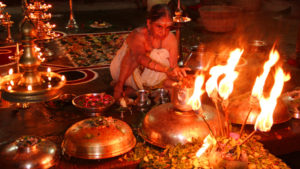
The prime temple festival Mannararala Aayilyam is celebrated in the months of September & October. The family associated with the temples carries the serpent idols to the grove and offers them various servings made of rice flour, milk, turmeric and lime.
People from all over Kerala and the country take part in this with devotion and enthusiasm. The temple holds special significance for childless couples. It is believed that if they visit the temple and perform the Uruli Kamarthal ritual with utmost devotion and faith, they will be blessed with a child. A turmeric paste given at the temple is believed to cure many ailments including infertility and leprosy.
It is believed that for a particular wish, a specific offering should be made. Some of them are:
- For having a child – A bronze vessel named Uruli for performing ‘Nurum Palum’
- For wealth – a pot full of gold or a gold pot
- For education & prosperity – silk grains, divine ornaments
- For health – salt
- For protection from poison – turmeric
- For curing ailments- pepper, peas & mustard
- For protection – images of serpents eggs, trees etc.
- For long life – melted butter (ghee)
- For desire fulfilment – milk, kadalai fruit & nilavapayasam
Who Should Offer Prayers?
Anyone who needs any help curing Naga doshas, ward off black magic, conceive a child or get rid of any kind of illness.
Presiding Deity:
The serpent God, Nagaraja
Location:
- The nearest airport – Cochin International (115 km)
- The nearest railway station – Haripad (3km), Mavelikkara (10km)
- The nearest cities – Haripad, Aroor, Thumpoly
6. Kamakhya Temple
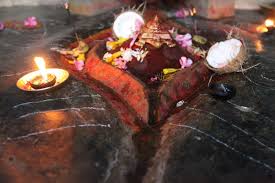
Introduction:
One of the 51 shakti pitha, the Kamakhya temple in Nilachal hill, Guwahati, Assam is one of the most important Hindu temples in the country. The temple is devoted to 10 mahavidyas, the primary one being Kamakhya Devi who is also known as Sodhasi or Goddess Sati, the consort of Lord Shiva among others like Kamakhya, Kali, Bhairavi, Tara, Kamala, Dhumavati.
It is situated about 8kms away from the main city of Guwahati.
The temple is around 2000 years old and has been demolished and built many times over. The current structure is around 500 years and is famous for its architecture, Nilachal type – hemispherical dome on cruciform base.
It is believed that Sati’s genitals fell here and hence this temple is believed to be the point of creation of the whole universe. The temple is also associated with the infamous Shiva-Daksha yagna.
Kamakhya, the tantric goddess is believed to be associated with Kali and Mata Tripura Sundari She is also known as the goddess of fruitfulness and hence is of extreme significance especially among child seeking couples and tantric worshippers.
Significance:
The earliest recorded mention of the temple is in the tezpur plates of Mlechchha dynasty. From the remains of the ancient architecture it can be assumed that the original construction was of Nagara and Malava style.
The inner cave of the temple has no statue of the goddess. The inner sanctum consists of yoni shaped bedrock and a naturally occurring spring which is believed to be having extreme powers.
The temple was demolished by the Muslim invaders in 15th century and its reconstruction was ordered by the founder of Koch dynasty, Vishwasingha.
Some of the legends associated with the temple that makes it so popular among devotees are –
Sati & Shiva:
The temple is believed to be the spot where the divine couple used to retire and spend time and also the spot where Sati’s genitals fell after Shiva danced in anger with her corpse.
It is believed that Goddess Kamakhya was extremely kind towards her devotees and anyone who prayed to her with faith, all their wishes were fulfilled.
Narakasur:
Another legend associated with the temple is that of the demon Naraka. It is believed that the moment he saw the Devi Kamakhaya he fell in love with her and wanted to marry her. The Devi placed a condition that if he can build a temple, tank and staircase from the bottom of the hill to her place in one night, she will marry him.
When the Gods saw that he is succeeding, they asked lord Vishnu for help. Lord Vishnu took the form of a fowl and led Naraka into believing that day has begun, distracting him till the sun actually rose. The angry Naraka killed the fowl while Devi Kamkhaya fled avoiding marrying him. It was later Krishna and Kamakhya that killed the demon king.
Daksha Yagna:
The most famous legend associated with the temple is that of Daksha Yagna. Daksha, Sati’s father had organised a yagna without inviting his daughter and son in law(Shiva).
Against Shiva’s advice, Sati still attended the yagna and when Daksha called Shiva wild and poor, she got angry and jumped into the fire, killing herself. When Shiva got to know he got furious and began tandava, the dance of destruction.
The Gods fearing the end of universe intervened and Lord Vishnu cut Sati’s body into parts. It is then her genitals fell down on earth and it is on this spot on which the Kamakhya temple stands today.
Tantric Peeth:
The temple is considered to be one of the most powerful tantric peeth in the country. Here yoni and linga are worshipped but not in idol form which is a must for tantric rituals. Such is the temples significance that every tantric has to visit this temple to complete their siddhis.
Till date animals such as goats and buffalos are sacrificed here. Legend has it that Sage Vatsayana received a request from the then king of the north to convert tribal and human sacrifice practices into an acceptable form of worship. The sage advised worshipping of Tara, a tantra goddess which got popular towards the eastern Himalayan belt where the people worshipped a yoni goddess “Kameke”.
Puja Ritual:
Kanya bhojan is a must for everyone visiting the temple. Being one of the most powerful tantric peeth, a lot of animals are offered to the Devi every day. The animals are available in the temple complex.
The temple is open from 8 am to 1 pm and 2:30 pm to 5:30 pm every day. A typical offering includes coconut, lachidana, chunri & sindoor.
Ambubachi Mela is one of the most celebrated festivals when devotees and tantric from all across the country visit the temple. It is usually celebrated in the month of June when it is believed that the Devi goes under a 3 day period of menstruation. The inner sanctum is covered with white cloth and the temple is closed for 3 days. Even The spring water turns red signifying the process of menstruation.
The 4th day is when the festival takes place. Tantric and devotees take part in it, offering sindoor, cloth, animal sacrifices to the goddess.
The other few festivals celebrated in the temple are Navaratri , Deva Dhavni and Manasha puja.
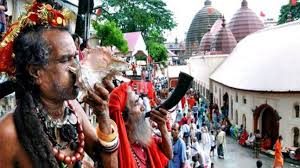
Who Should Offer Prayers Here?
Anyone who follows tantric practices wants to get rid of fear, wants their desires fulfilled especially that of a child and wants success in life.
Presiding Deity:
The main deity of the temple is Goddess Kamakhya but she is worshipped in the yoni form
Location:
- The nearest airport – Guwahati Airport
- The nearest railway station – the Paltan Bazaar railway station (Guwahati)
- The nearest cities – Dispur, Rangia and Shillong
Do write to us and let us know if you know of any other temple that we can add to the list.
We are sure that our readers would also love to hear about your own experiences when you visited any of these temple. So please do share in the comments below.
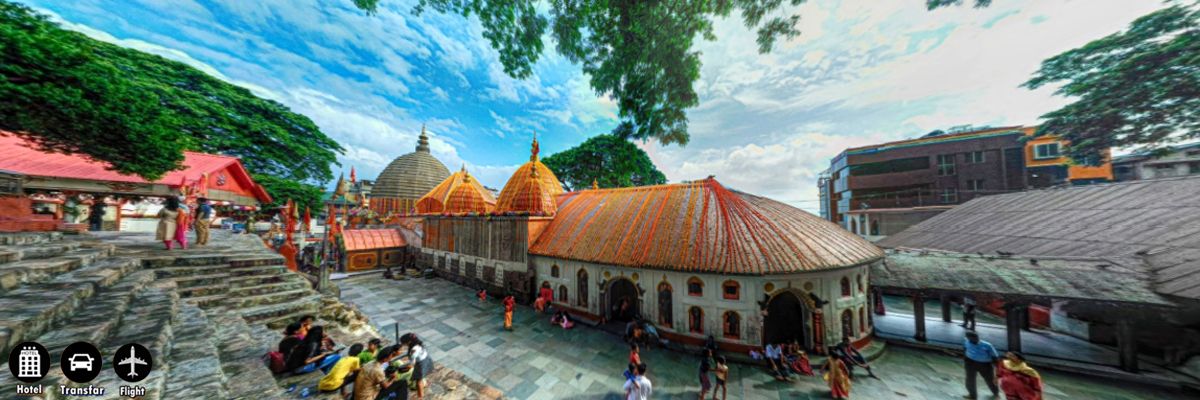

Most Important information -Many Thanks
There is a temple, where women pass through a stone. Plz mention the name. I want it for my neighbors
ಸ್ವಾಮಿ ಅರೆಯೂರು ವೈದ್ಯನಾಥೇಶ್ವರ ನಾಳೆ ಮುಂಜಾನೆಯೊಳಗೆ ನನ್ನ ಕೈ ಕಾಲಿಗೆ ಶಕ್ತಿ ನೀಡು ತಂದೆ ನಿನ್ನಯ ದರ್ಶನ ಪಡೆದು ರುದ್ರಾಭಿಷೆಕ ಸಲ್ಲಿಸಿ ತುಂಬೆ ಹೂವಿನ ಮಾಲೆ ಅರ್ಪಿಸುವೆ ಸ್ವಾಮಿ.
This is true, Visiting Kamakhya Devi was truly a magical experience, the temple has lot of power, one could feel the vibrations if you’re evolved enough to understand energies. And yes maa blesses people who visit her with full devotion, I hv conceived the very next month after visiting Kamakhya temple. So blessed.